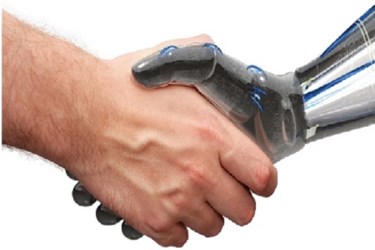Robotics In Industry: How Will It Impact IT?

By Christine Kern, contributing writer

According to a PwC report, there are currently about 1.5 million robots working in industries around the world, with as many as 230,000 in the U.S. alone. Global shipments of robotics hit an all-time high of 180,000 in 2013, with 200,000 forecasted for 2014 by the International Federation of Robots (IFR). With the virtual explosion of robotics being employed in industries, taking on more “human” capabilities and traits, including sensing, dexterity, memory, trainability, and object recognition, robots are taking on more jobs across the industry line.
What impact will this have on IT and staffing in industry?
PwC explains, “As legions of robots and other automation technologies find their ways into production facilities and distribution centers — as well as through supply chains — manufacturers will grapple with an advanced level of commingling of human and machine. Indeed, manufacturers could be looking at an awkward period of systemic human-resource change as they introduce robots to more varied manufacturing tasks, and as they call for greater human-machine collaboration. They’ll also prepare for the implications of displacing human workers with robots through so-called ‘botsourcing.’”
PwC raises the possibility that a greater robotic workforce could actually drive a need for a new line of human talent to train, manage, and repair that growing robotic workforce, in addition to talent to develop the burgeoning robotic technology industry itself.
When queried by a PwC survey, more than one-third of U. S. manufacturers said that the biggest impact robots will have on the manufacturing workforce in the next three years is that they will lead to “new job opportunities to engineer advanced robots and robotic operating systems.”
The PwC survey also found that 59 percent of manufacturers are currently using some sort of robotics technology and 28 percent believe that replacement of workers will be the biggest impact of robots on the U.S. manufacturing workforce in the next 3 to 5 years.
An LNS Research blog post also addressed the issue, questioned whether or not automation will create a generation of superindustrial professionals. As the blog post notes, “For businesses, fact of the matter is, it’s starting to make more sense to invest in robotics. In the right scenarios, the ROI could exceed that of a human worker. The challenge is that those scenarios tend to be where a large chunk of industrial professionals make their living — doing things that are repeatable like assembly and order fulfillment — hence, the socioeconomic implications and the newsfeed buzz.”
But in a recent article for Automation.com, Gary Frank, VP of automated systems at Westfalia Technologies, says, “Contrary to the commonly held belief that automation technology is destroying millions of jobs and displacing workers across the country, today’s job market is not vanishing, but rather evolving. While there are surely some jobs rendered obsolete due to automation, workers are still needed, but for higher-level, more tech-related jobs.
“In reality, the logistics industry will create 270,200 job openings each forthcoming year, which will amount to over one million job openings nationwide over the next four years, as predicted by the Georgia Center of Innovation for Logistics. In addition, the Manufacturing Institute estimates that approximately 600,000 positions go unfilled every year.”
